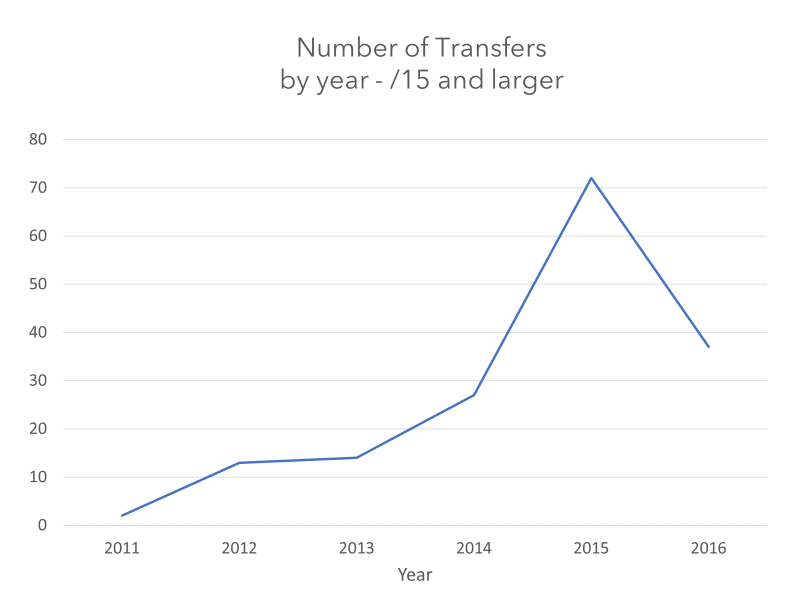IPv4 transfer trends, regardless of IPv6 implementation, are an indicator of the longevity of the IPv4 market for both buyers and sellers. IPv4 Market Group has studied IPv4 transfer volumes to see if the number of IPs transferred is continuing to grow.
Increased IPv4 Transfer Volume
There are several factors that might cause IPv4 transfer volumes to increase.
- Many companies obtained IPv4 blocks through the Regional Internet Registries prior to run-out. If this inventory has depleted, then the company must go through the IPv4 Transfer Market in order to grow.
- New businesses need IPv4 addresses, and can only get the quantity they need through the IPv4 Transfer Market.
- Companies convert to IPv6 and sell their IPv4 blocks that they no longer need, which would generate transfer volume, but at falling prices.
- Companies with excess IPv4 addresses, especially legacy owners, sell IPv4 addresses to monetize before the market slows.
Decreased IPv4 Transfer Volumes
Similarly, there are factors that may cause the IPv4 Transfer Volume to decrease.
- Companies have purchased all the IPv4 addresses they will need and are comfortable with their inventories.
- Alternative strategies such as Carrier Grade NAT and IPv6 conversion are leading companies to need fewer IPv4 addresses.
- Prices have increased to the point where, for some companies, the business case is no longer viable to purchase IPv4 addresses.
- Large block holders, such as the Class A owners from before the formation of ARIN, have already sold a large fraction of the IPv4 inventories that will make it to market.
We were able to look at the IPv4 transfer data published by RIPE, APNIC, and ARIN, excluding legacy RIPE transfers which are not reported.
Current IPv4 Transfer Volume Observations
It is our observation that total IPv4 transfer volume fell from 2015 to 2016. The chart below shows the number of IPs transferred per year in millions of IPs.

When looking at block sizes of /15 and larger, it turns out more blocks were moved in 2015 compared to 2016 – in other words the large block transfers have decreased year over year.

However, the number of /16s transferred grew significantly in 2016.

The decrease in IPv4 addresses transferred in 2016 must be due to multiple factors:
- Companies having already stockpiled the very large blocks they might need.
- The possibility that the easily transferred large blocks have already been sold.
- Future sellers are demanding higher prices that buyers are not (yet) willing to pay.
IPv4 Market Group will continue to keep an eye on transfer volumes and continue to share our findings, as this is an indicator of the longevity of the IPv4 market for both buyers and sellers.


